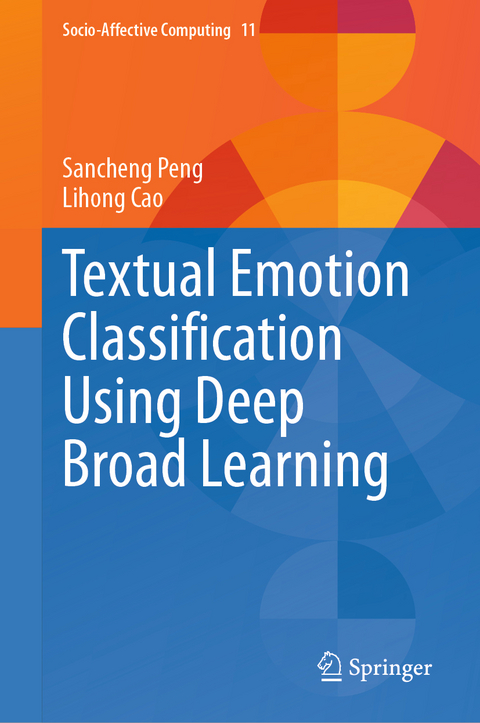
Textual Emotion Classification Using Deep Broad Learning
Springer International Publishing (Verlag)
978-3-031-67717-5 (ISBN)
In this book, the authors systematically and comprehensively discuss textual emotion classification by using deep broad learning. Since broad learning possesses certain advantages such as simple network structure, short training time and strong generalization ability, it is a new and promising framework for textual emotion classification in artificial intelligence. As a result, how to combine deep and broad learning has become a new trend of textual emotion classification, a booming topic in both academia and industry.
For a better understanding, both quantitative and qualitative results are present in figures, tables, or other suitable formats to give the readers the broad picture of this topic along with unique insights of common sense and technical details, and to pave a solid ground for their forthcoming research or industry applications. In a progressive manner, the readers will gain exclusive knowledge in textual emotion classification using deep broad learning and be inspired to further investigate this underexplored domain.
With no other similar book existing in the literature, the authors aim to make the book self-contained for newcomers, only a few prerequisites being expected from the readers. The book is meant as a reference for senior undergraduates, postgraduates, scientists and researchers interested to have a quick idea of the foundations and research progress of security and privacy in federated learning, and it can equally well be used as a textbook by lecturers, tutors, and undergraduates.
Prof. Sancheng Peng is a Professor at the Laboratory of Language Engineering and Computing, Guangdong University of Foreign Studies, Guangzhou, China. Prof. Peng's research interests include Natural Language Processing, Emotion Computing, Social Computing, and Trusted Computing. He has authored or co-authored over 80 technical papers in both journals and conferences. Prof. Peng has served as the Guest Editor of Future Generation Computer Systems and as a PC member for various prestigious international conferences. He is a Senior Member of the CCF and a member of ACM.
Ms. Lihong Cao is a Lecturer at the School of English Education, Guangdong University of Foreign Studies, Guangzhou, China. She has authored or coauthored over 10 technical papers in conference proceedings and journals such as the Journal of Network and Computer Applications, Knowledge-Based Systems, Information Sciences, and Tsinghua Science and Technology. Her research interests include Applied Linguistics, Natural Language Processing, Intelligent Computing.
Preface.- Acknowledgements.- Chapter 1. Introduction.- Chapter 2. BERT and Broad Learning for Textual Emotion Classification.- Chapter 3. Cascading Broad Learning for Textual Emotion
Classification.- Chapter 4. Dual Broad Learning for Textual Emotion Classification.- Chapter 5. Single-source Domain Adaptation for Emotion Classification Using CNN-Based Broad Learning.- Chapter 6. Multi-source Domain Adaptation for Emotion Classification Using Bi-LSTM-Based Broad Learning. Chapter 7. Emotion Classification in Textual Conversations Using Deep Broad Learning.- Chapter 8. Rational Graph Attention Network and Broad Learning for Emotion Classification in Textual
Conversations.- Chapter 9. Summary and Outlook.
| Erscheinungsdatum | 29.09.2024 |
|---|---|
| Reihe/Serie | Socio-Affective Computing |
| Zusatzinfo | XV, 155 p. 46 illus., 45 illus. in color. |
| Verlagsort | Cham |
| Sprache | englisch |
| Maße | 155 x 235 mm |
| Themenwelt | Geisteswissenschaften ► Sprach- / Literaturwissenschaft ► Sprachwissenschaft |
| Informatik ► Theorie / Studium ► Künstliche Intelligenz / Robotik | |
| Schlagworte | Bert • Broad Learning • Cascading Broad Learning • Context Encoding • Deep learning • domain adaptation • Dual Broad Learning • emotion classification • Neural networks • Rational Graph Attention Network • sentiment analysis • social network analysis • Textual Conversations • Textual Emotion |
| ISBN-10 | 3-031-67717-X / 303167717X |
| ISBN-13 | 978-3-031-67717-5 / 9783031677175 |
| Zustand | Neuware |
| Haben Sie eine Frage zum Produkt? |
aus dem Bereich


